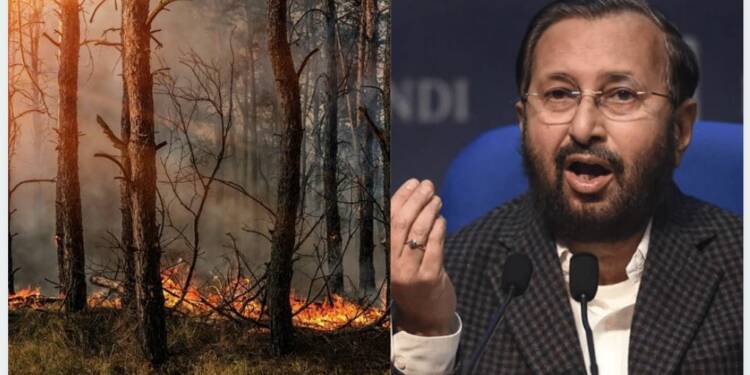For the past week, fire in Odisha’s Similipal National Park has extended stress among environmentalists. So far, the fire has affected around 300 hectares of the forest including eight out of twenty ranges of Similipal National Park in the Mayurbhanj district of Odisha.
According to the reports by The Hindu, Similipal National Park is a habitat for many species including the Bengal tiger and Asian elephant, Birds of 304 species, 62 species of Amphibians and at least 20 species of reptiles.
On Friday, Union Minister Prakash Javadekar tweeted, “The fire at Similipal forests is now under control & no loss of life has been reported due to the incident. The Similipal forests are invaluable, not just for India but for the entire world. I appreciate the efforts of forest officials to contain the fire.”
The fire at Similipal forests is now under control & no loss of life has been reported due to the incident.
The Similipal forests are invaluable,not just for India but for the entire world. I appreciate the efforts of forest officials to contain the fire.https://t.co/LWD2XxQjaM
— Prakash Javadekar (Modi Ka Parivar) (@PrakashJavdekar) March 5, 2021
According to a tweet by the Kalinga Institute of Social Sciences, several environmental activists have tweeted images and videos of the fire. “The Similipal Fires have raged for 10 days already, destroying much-endangered flora and fauna, decimating medicinal plants, and displacing countless wildlife & Adivasi communities in 8 out of 21 ranges in Similipal – Asia’s second-largest biosphere reserve,” the institute said.
https://twitter.com/kissfoundation/status/1367076782269075462
“The fire has been caused by the abnormal rise in temperatures,” said Jitendra Kumar, the principal chief conservator of forest in the eastern state of Odisha.
Chief Minister Naveen Patnaik had also reviewed the situation at the national park, he also said that there was no loss of life and damage to big trees.
But conservationists working in Similipal said that many orchids and medicinal plants may have been destroyed by the fire. Conservationist Vanoomitra Acharya said, “It would take some time before the losses can be counted, it is too early for anyone to say that there have been no losses,” reported The Hindustan Times.
According to a Forest Survey of India Report 2019, of the 30,000 incidents of forest fires that were reported in India in 2019, most of them were reported from Odisha, Chhattisgarh, Madhya Pradesh, and the southern states. The FSI report said, “The dry deciduous forests, which receive low rainfall, face 5-6 dry months and have nutrient-poor soil, such as those in tropical and subtropical latitude, are more vulnerable to fire compared to others.”
The report further articulates that of the total 712,249 square kilometres of forest cover in the country, 152,421 square km (21.40%) was either highly or extremely fire-prone. Most of these vulnerable forests were in Odisha, Mizoram, Chhattisgarh, Manipur, and Madhya Pradesh.
It comes as a surprise that Asia’s second-largest Biosphere is engulfed in flames, but remained out of the top list priorities of the national as well as international media. The reporting on the biosphere is relatively very low as compared to the California wildfires in 2020 and the Amazon forest fire in Brazil in 2019.
The media must come out with extensive reports regarding the biosphere fire impact on nature and the ecosystem of the surrounding areas. In addition to this, the role of the state government and the central government in response to containing the fire must be told.
